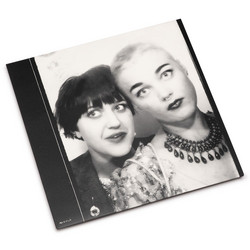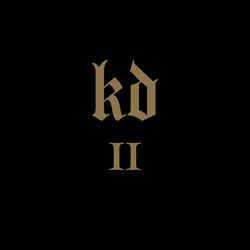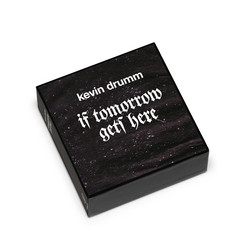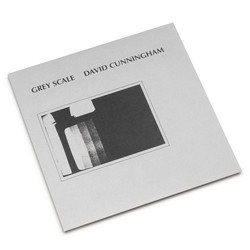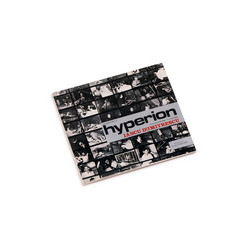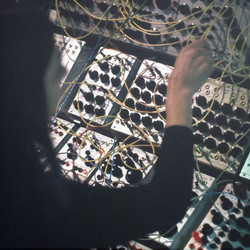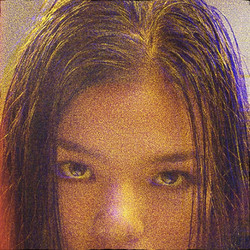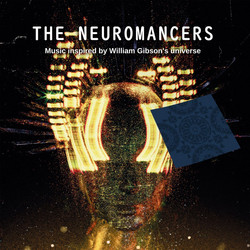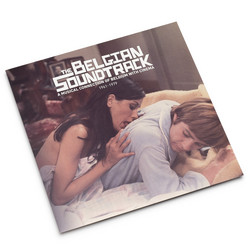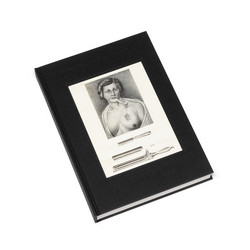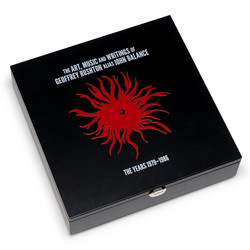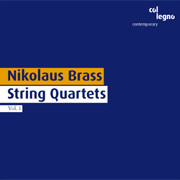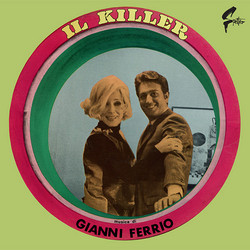Various
British Cassette-Culture: Recordings 1975-1985
An unparalleled showcase of 'British Cassette-Culture: Recordings 1975-1985' presenting tape releases by This Little Alien, Legendary Pink Dots, Stephen Cadman, All the Madman, Carl Matthews and Kevin Harrison, avalaible on vinyl for the first time. Frank Maier's Vinyl-on-Demand turns its attentions to the UK tape productions during that golden era.

It pays particular focus to:
Carl Matthews. Especially the german music he got into right from the start, buying albums from Virgin Records in London of bands like Cosmic Couriers, Klaus Schulze, Guru Guru, Amon Duul 2 etc... although his friends found his music-taste a bit disturbing. Eventually Carl decided to do his own stuff to give him the freedom to do music he really loved i.e., electronic music. He bought a reel-to-reel. A Korg Polyphonic Ensemble, a Korg MS20 synthesiser and a Korg SQ10 Sequencer. All very limiting compared to todays technology, but good/interesting sounds could be produced. Carl produced his first tapes and they found release on labels and distribution-outlets like Mirage (run Martin Reed) Aksu, Call for World Saviours, East-West, Iridescence. Some of the tracks on this album are from the very first releases "Intervention 87" and "Freewheel to Freedom", which were more experimental and minimal incorporating guitar sounds.
Kevin Harrison’s music is guitar orientated. But treated and mutated. Harrison is no ordinary guitar hero: his playing shimmers like light reflected on water. His work is reminiscent of a cross between Eno, Michael Rother and Eric Random (when things hot up). While in the ambient field, it balances a lot more in the direction of contemporary electronics and a heavier sound. Nevertheless his influences make themselves very clear. At heart a minimal psychedelicist Harrison’s is the music of the hypnotic state, of dream and trance. It’s core is an obvious affection for the work of men like Terry ‘Rainbow in Curved Air’ Riley, Philip Glass, Kraftwerk and The Normal tempered with an awareness of oriental rhythms and harmonies which give the elemental electronics a warmer, human touch.
Legendary Pink Dots - In the early 80s the whole concept o of committing music to vinyl seemed like a noble but improbable dream. It was expensive and ,unless a label was offering ,was consigned to the experimental band's "bucket list." Cassette albums were another matter however. The Dots had chaotically joined the Tape revolution with a couple of releases on their own Mirrordot label and, after accidentally wiping one of the masters , decided it was something better left to "real" labels. Hence the band was delighted when Ian Dobson from Flowmotion approached them as singer Edward Ka-Spel held the label high and owned a few of their releases. Consequently Premonition was assembled. A combination of older and newer songs were placed in an extremely psychedelic collage with a rack of effects tuned and abused with the help of Pat Bermingham who owned the In Phaze label and a small studio which used to belong to Pink Floyd's Nick Mason. Sadly Flowmotion ran into trouble after the release and it took a few years before the opts actually saw a copy the original album, but Hell that was how things were in the 80s.

Ron Berry got involved with electronic music around 1972-3 when he heard popular synthesiser based acts of the day. He built his first synthesiser from a magazine article, but the performance wasn’t that great so he started to modify it. One thing led to another and he slowly got hooked. Before too long he’d built a modular system of his own design. Microprocessor boards became affordable (just) at the end of the seventies. These things seemed well suited to sequencing control voltages so he saved up hard and bought one. The outcome of the experiments was a fully programmable sequencer, and electronic percussion unit. A songwriter friend of Ron and fellow band member Phil Clogg became interested in it. The result of this was to form an electronic duo called “Out of Control” around 1979. It was based around 2 modular synthesisers, guitar, vocals and a further synthesiser and electronic percussion controlled by my unique microprocessor based sequencer. The microprocessor generated all the basic rhythmic backing control patterns for the synthesisers and electronic percussion during the whole of the gig. Phil played guitar, sang vocals plus playing a pedal board for some extra bass depth. He also wrote the songs which we jointly arranged. They must have easily been the first band in the UK to employ a computer for a band’s live music creation and generation. As it was controllable interactively and just produced control voltages and trigger signals, it was live. For them this was so much better than using a fixed backing on a tape recorder as some were doing. Today computers sequence nearly all recorded popular music! The duo was a huge turning point for Ron. They just gelled from the start. Ron enjoyed working with Phil on this more than I can say. We gigged regularly and even managed to get a resident gig at a local pub alternating with a young up and coming band called “Prefab Sprout” who we became good friends with. It was a great experience Ron will never forget. He owes Phil a great deal. After OOC Ron produced his first electronic music album, “Where Dark Forces Meet”, released on cassette on the independent “Flowmotion”. It was and, as this release shows, it still is quite popular. There are echoes of Out of Control in some tracks but all tracks are his own compositions built around his experiences of life at the time. The album is basically a 4 track multi-track recording, with extra atmospheres and effects flown in using a couple of additional two track tape recorders. The mixing desk at the time was 6 channel plus the mixers on Ron's synthesisers. From the success of this he really wanted to develop his own solo electronic rock-ambient music live, so he concentrated on expanding the sequencer to produce polyphonic control patterns and added a Godwin string synth so I could produce a full sound playing solo. Ron used this setup for quite a while. Using this system the first big gig Ron did was supporting “Hawkwind” at the “ UK Electronica” event in Milton Keynes, which naturally got me some useful publicity too. By this time he was composing the third album “Osiris”. Ron met up with Kevin Raddy at this gig and he did the wonderful art work for the original LP version of “Osiris” released by “Projects UK” (previously the much admired “Spectro Arts”). After Osiris Ron experimented with acoustic or physical modelling, uniquely with special analogue modules he’d designed and built. The next 2 albums featured these strange sounds heavily. Over the years, when time away from earning a living has permitted, Ron has continued to produce electronic music. To date Ron has produced 14 albums of solo electronic music, ranging from rock to more ambient experimental styles. Ron has continued to experiment and build stuff when he could. Since then analogue has largely given way to digital. He has embraced and exploited much of this technology along the way but in some respects he remained ‘old school’ as a lot of today’s highly compressed digital earplug music is not exactly to his taste. However it is very comforting to know that after all these years there has recently grown a massive wave of interest in analogue modular synthesisers, with a huge number of small manufacturers producing a wide range of modules that fit in a standard rack. The likes of Bob Moog and Don Buchla must have got something very right. Long may it continue!
Stephen Cadman is a synthesist from Leeds, GB now living in Australia. In late 1980 he produced and released a C60-Tape on his own Big Smith’s Nose Tapes-Label. His synth music and style in the vein of Tangerine Dream and other german electronica bands of the 70’s found interest to Ian Dobson and was then distributed via Ian and also (re)-released shortly after on the Flowmotion-Label.
Those Little Aliens / This Little Alien - Recordings 1980/81 from Image 341, Flowmotion and Un-Ltd Abilities-Label


